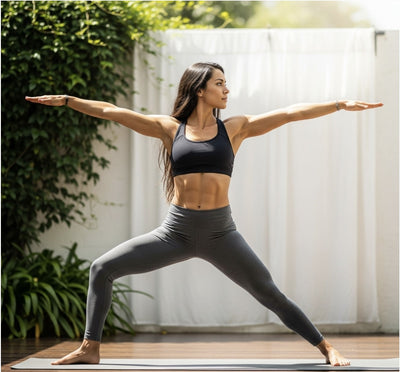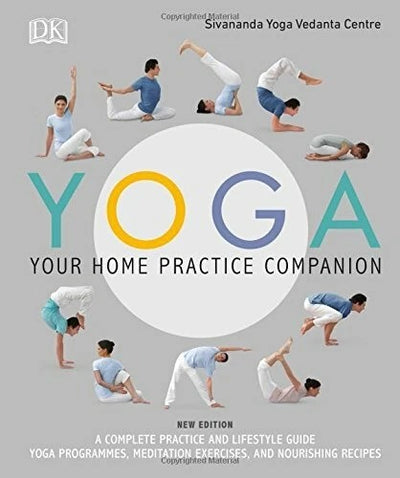
Hatha vs. Vinyasa: Similarities and Differences - 5To9Style
Share
Hatha vs. Vinyasa: Similarities and Differences
Unraveling the Paths: Similarities and Differences Between Hatha and Vinyasa Yoga
For newcomers to yoga, the variety of styles can be overwhelming. Two of the most common and foundational styles, Hatha Yoga and Vinyasa Yoga, are often confused or used interchangeably. While they share common roots in ancient yogic philosophy and a focus on yoga poses (asanas) and breathwork (pranayama), they have distinct approaches to practice. Understanding the key similarities and differences between Hatha and Vinyasa Yoga is crucial for choosing the ideal path for your unique needs and goals.
Both styles offer incredible benefits for the body and mind, but they achieve these benefits through different rhythms and intensities.
The Core Connection: Similarities
Despite their variations, Hatha and Vinyasa share fundamental principles:
- Asanas (Yoga Poses): Both styles utilize traditional yoga postures to build strength, flexibility, balance, and body awareness. Many poses found in a Vinyasa class originate from Hatha Yoga.
- Pranayama (Breath Control): Both emphasize conscious breathing. Breath is integral to both practices, whether used to deepen a static hold or to synchronize with movement.
- Mind-Body Connection: Both aim to unite the mind and body, cultivating mindfulness and present-moment awareness.
- Holistic Benefits: Both practices contribute to stress reduction, improved mental clarity, enhanced physical well-being, and a deeper sense of inner peace.
- Rooted in Tradition: Both stem from ancient yogic traditions and philosophies.
The Defining Distinctions: Differences
The primary differences between Hatha and Vinyasa lie in their pace, the way poses are linked, and the overall feel of the class.
1. Pace and Hold Duration
- Hatha Yoga: Generally a slower-paced practice. Poses are typically held for longer durations (several breaths or more), allowing practitioners to explore the alignment and subtleties of each posture more deeply. It often involves coming into a pose, holding it, coming out, and then resting briefly before the next pose.
- Vinyasa Yoga: Characterized by its dynamic, flowing nature. Poses are linked seamlessly together with the breath, creating a continuous sequence of movements. Holds are generally shorter, and the focus is on the transitions between poses.

2. Flow and Sequencing
- Hatha Yoga: Often less about "flow" and more about establishing individual postures. While there might be a sequence, it's typically less fluid, with pauses or brief rests between poses. Sequences can vary from class to class, but the emphasis is on the pose itself.
- Vinyasa Yoga: "Vinyasa" literally means "to place in a special way," referring to the intelligent linking of movement with breath. Classes are dynamic, often resembling a dance. Sequences are creatively varied by teachers, meaning no two classes are exactly alike. The breath cues each movement, creating a continuous "string of pearls."
3. Intensity and Experience
- Hatha Yoga: Generally considered more gentle and foundational, making it an excellent starting point for beginners or those seeking a slower, more meditative practice. The focus is on building awareness of basic alignment and breath. It can still be challenging as poses are held for longer.
- Vinyasa Yoga: Often more physically demanding and faster-paced. The continuous movement elevates the heart rate, providing a cardiovascular workout and generating internal heat (tapas). This makes it appealing to those seeking a more athletic and invigorating experience.

Choosing Your Ideal Yoga Style
The best choice between Hatha and Vinyasa depends on what you're seeking from your yoga practice:
- Choose Hatha if: You're a beginner, prefer a slower pace to master alignment, want to focus on individual poses, or are seeking a more meditative and gentle experience.
- Choose Vinyasa if: You enjoy dynamic movement, prefer variety in sequences, want a more physically challenging and cardiovascular workout, or are drawn to a continuous, flowing practice.
Many practitioners enjoy both styles, finding that Hatha builds the strong foundation and body awareness needed for Vinyasa, while Vinyasa offers the dynamic challenge. Whether you prefer the stillness of Hatha or the fluidity of Vinyasa, having a supportive yoga mat and comfortable yoga wear will enhance your journey.

Discover Your Perfect Flow
Ready to explore the similarities and differences between Hatha and Vinyasa Yoga and find the ideal yoga style for your practice? Embrace the journey of self-discovery on your mat. For a wide selection of high-quality yoga mats and comfortable yoga apparel designed for every practice, explore our full collection at https://5to9style.com/collections/all.
Begin your yoga journey today and discover the path that resonates most with you. Visit our homepage for more insights and to find products that align with your mindful lifestyle: https://5to9style.com.








